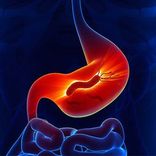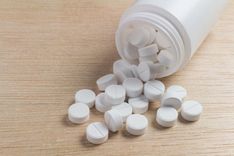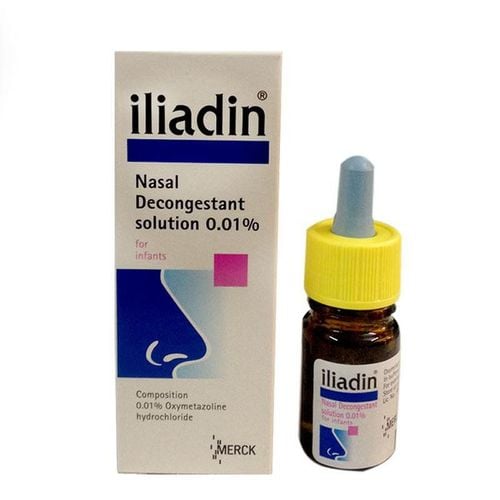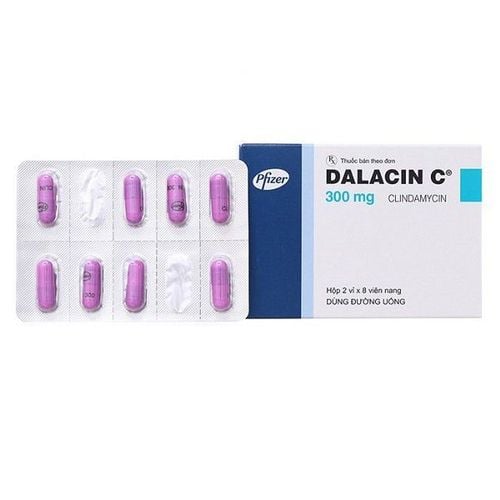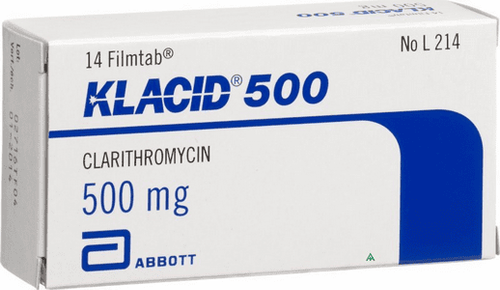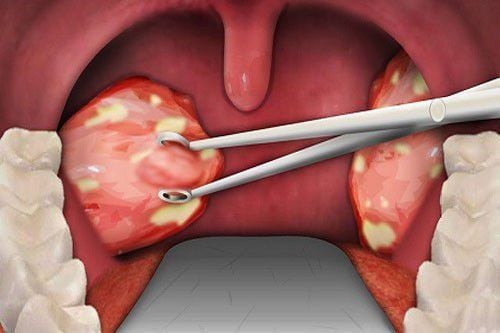1. Uses of Curam Tab
Curam contains a combination of amoxicillin and clavulanic acid in the forms of Curam Tab 625mg (containing 500mg amoxicillin and 125mg clavulanic acid) and Curam 1000mg (containing 875mg amoxicillin and 125mg clavulanic acid). It is indicated for the treatment of the following bacterial infections:
- Sinusitis caused by acute bacterial pathogens that have been clearly diagnosed.
- Acute otitis media, community-acquired pneumonia.
- Acute exacerbation of chronic bronchitis.
- Pyelonephritis, cystitis.
- Skin and soft tissue infections such as cellulitis, severe dental abscess, animal bites.
- Bone and joint infections, particularly osteomyelitis.
2. Dosage of Curam Tab
The dosage of Curam 625mg and Curam Tab 1000mg depends on the patient's condition. The medication should be taken orally, preferably at the beginning of a meal to optimize the absorption of amoxicillin/clavulanic acid and minimize gastrointestinal intolerance.
The dose of Curam medication chosen for treating infections can depend on the drug's sensitivity to the bacteria causing the infection, as follows:
Severity of infection and infection site:
The use of Curam tab 625mg or Curam tab 1000mg (with varying ratios of amoxicillin and clavulanic acid) should be considered as necessary.
- Severity of the infection and the location of the infection: The choice between Curam Tab 625mg and Curam Tab 1000mg (with varying ratios of amoxicillin and clavulanic acid) should be considered as necessary.
- Adults and children over 40kg: The recommended dosage is 1500mg of amoxicillin/375mg of clavulanic acid per day. The dosage may be adjusted depending on the patient’s response.
- Treatment duration depends on the infection severity and the patient’s response. In some cases, such as osteomyelitis, treatment may need to be prolonged. The treatment duration should not exceed 14 days without reassessment.
Adults and children over 40kg: The usual dose is 1 tablet of Curam Tab 625mg, 3 times a day. Children may receive Curam in suspension form or a pediatric-specific preparation (especially for children under 6 years old).
Elderly patients: No dosage adjustment is necessary for this group.
Renal impairment: The dosage should be adjusted based on the maximum recommended amoxicillin dose. Patients with creatinine clearance greater than 30ml/min do not require dose adjustment. Patients with creatinine clearance less than 10 ml/min should use the recommended dosage of 1 tablet of Curam Tab 625mg once daily.
Hepatic impairment: Caution should be taken when using Curam Tab 1000mg or Curam Tab 625mg, and liver function should be monitored at regular intervals.
3. Side Effects of Curam Tab
Curam Tab may cause the following side effects:
- Common: Diarrhea, Candida infections in the mucous membranes and skin, vomiting, nausea.
- Less common: Headache, dizziness, indigestion, increased AST and/or ALT, itching, rash, urticaria, indigestion, headache, dizziness.
- Rare: Reversible leukopenia, erythema multiforme, thrombocytopenia.
- Unclear frequency: Overgrowth of sensitive bacteria, reversible agranulocytosis, hemolytic anemia, prolonged bleeding time and prothrombin time, vascular edema, anaphylaxis, serum sickness-like syndrome, hypersensitivity vasculitis, reversible hyperactivity, seizures, antibiotic-associated colitis, hepatitis, cholestatic dermatitis, blistering dermatitis.
4. Precautions When Using Curam Tab
4.1. Contraindications
Curam Tab 625mg and 1000mg should not be used in the following cases:
- Patients with hypersensitivity to any component of Curam Tab or any penicillin antibiotics.
- Patients with a history of severe immediate hypersensitivity (e.g., anaphylaxis) to Beta-lactam antibiotics (e.g., carbapenems, cephalosporins, or monobactams).
- Patients with a history of jaundice or hepatic failure related to amoxicillin/clavulanic acid.
4.2. Cautions
Before using Curam, patients should be carefully evaluated for any history of hypersensitivity to cephalosporins, penicillins, or other Beta-lactam antibiotics.
Serious hypersensitivity reactions (which can be fatal) have been reported in patients treated with penicillin. The risk of hypersensitivity is higher in patients with a history of penicillin hypersensitivity and in those with allergic conditions. If an allergic reaction occurs, the treatment should be stopped immediately, and the doctor should be informed to establish an appropriate alternative treatment plan.
For pathogens resistant to Beta-lactam antibiotics without Beta-lactamase mediation, Curam Tab should not be used.
Seizures may occur in patients with renal impairment or those receiving high doses of the drug.
Curam Tab 1000mg or Curam Tab 625mg should be avoided in patients suspected of having infectious mononucleosis, as a measles-like rash following amoxicillin treatment has been associated with this condition.
Long-term treatment with Curam may lead to the overgrowth of resistant bacteria.
A widespread rash with fever early in treatment, associated with pustules, may be a sign of acute generalized exanthematous pustulosis. Patients with this reaction should discontinue Curam and should be contraindicated for future use of any amoxicillin formulations.
There have been reports of liver-related adverse reactions (primarily in males and the elderly) associated with long-term treatment. Therefore, caution should be taken in patients with evidence or a history of liver disease.
Antibiotic-associated colitis has been reported with nearly all antimicrobial agents, ranging from mild to life-threatening severity. Therefore, it is important to monitor and diagnose patients who develop diarrhea during or after antibiotic treatment. In cases of colitis related to antibiotic use, treatment with Curam should be stopped, and the treating doctor should be informed to establish an appropriate alternative treatment plan.
Patients requiring long-term treatment should have periodic assessments of organ function (kidneys, liver, and hematopoietic systems).
Ability to drive and operate machinery: No adverse effects on the ability to drive or operate machinery have been reported. However, patients may experience side effects like seizures, dizziness, allergic reactions, etc., that could impair their ability to drive or operate machinery.
Pregnant women: Animal studies have shown that Amoxicillin/Clavulanic acid does not cause harm during pregnancy, fetal development, the pregnancy process, or postnatal development. Data on its use in pregnant women do not show an increased risk of congenital malformations. However, the drug should still be avoided during pregnancy unless prescribed by a doctor.
Breastfeeding women: Both amoxicillin and clavulanic acid are excreted in breast milk and may cause diarrhea or fungal infections in breastfed infants. Therefore, the mother should stop breastfeeding during treatment. Curam should only be used in breastfeeding women when prescribed by a doctor, when the benefits outweigh the risks.
5. Drug Interactions with Curam Tab
- Oral anticoagulants: Concurrent use of oral anticoagulants (warfarin, acenocoumarol) with amoxicillin should be limited. If co-administration is required, prothrombin time or international normalized ratio should be monitored carefully when adding or discontinuing amoxicillin.
- Methotrexate: Amoxicillin and penicillin antibiotics, in general, may reduce the excretion of methotrexate, increasing its side effects and toxicity.
- Probenecid: Co-administration of Curam with probenecid is not recommended, as probenecid reduces the renal excretion of amoxicillin, leading to increased blood amoxicillin levels.
- Mycophenolate mofetil: There have been reports of a 50% reduction in the concentration of the active metabolite of mycophenolate mofetil (mycophenolic acid) when used concurrently with amoxicillin.
Curam Tab contains a combination of amoxicillin and clavulanic acid. It is indicated for treating various infections such as upper and lower respiratory tract infections, acute sinusitis, otitis media, and both acute and chronic bronchitis. To ensure effective treatment and avoid side effects, patients should use the medication as prescribed or seek advice from a doctor or pharmacist.
Stay updated with the International Vinmec General Hospital website for more health, nutrition, and beauty information to protect your health and the well-being of your loved ones.
Please dial HOTLINE for more information or register for an appointment HERE. Download MyVinmec app to make appointments faster and to manage your bookings easily.

